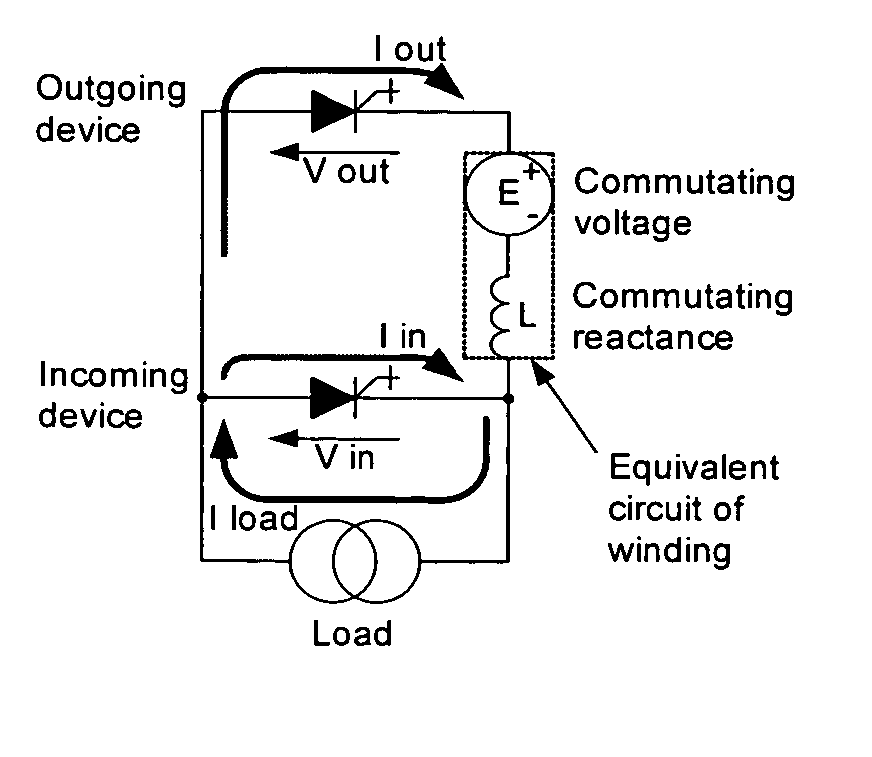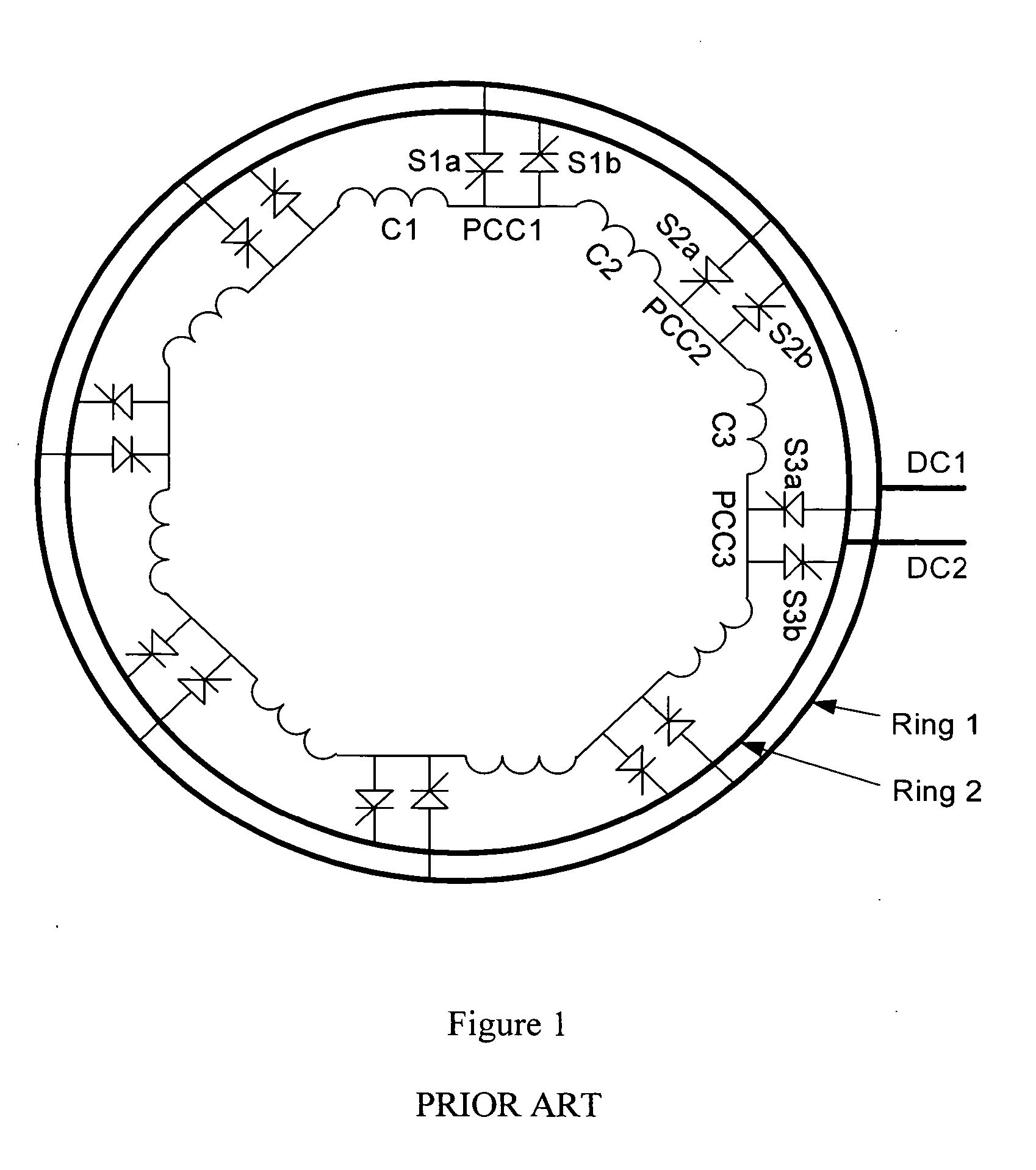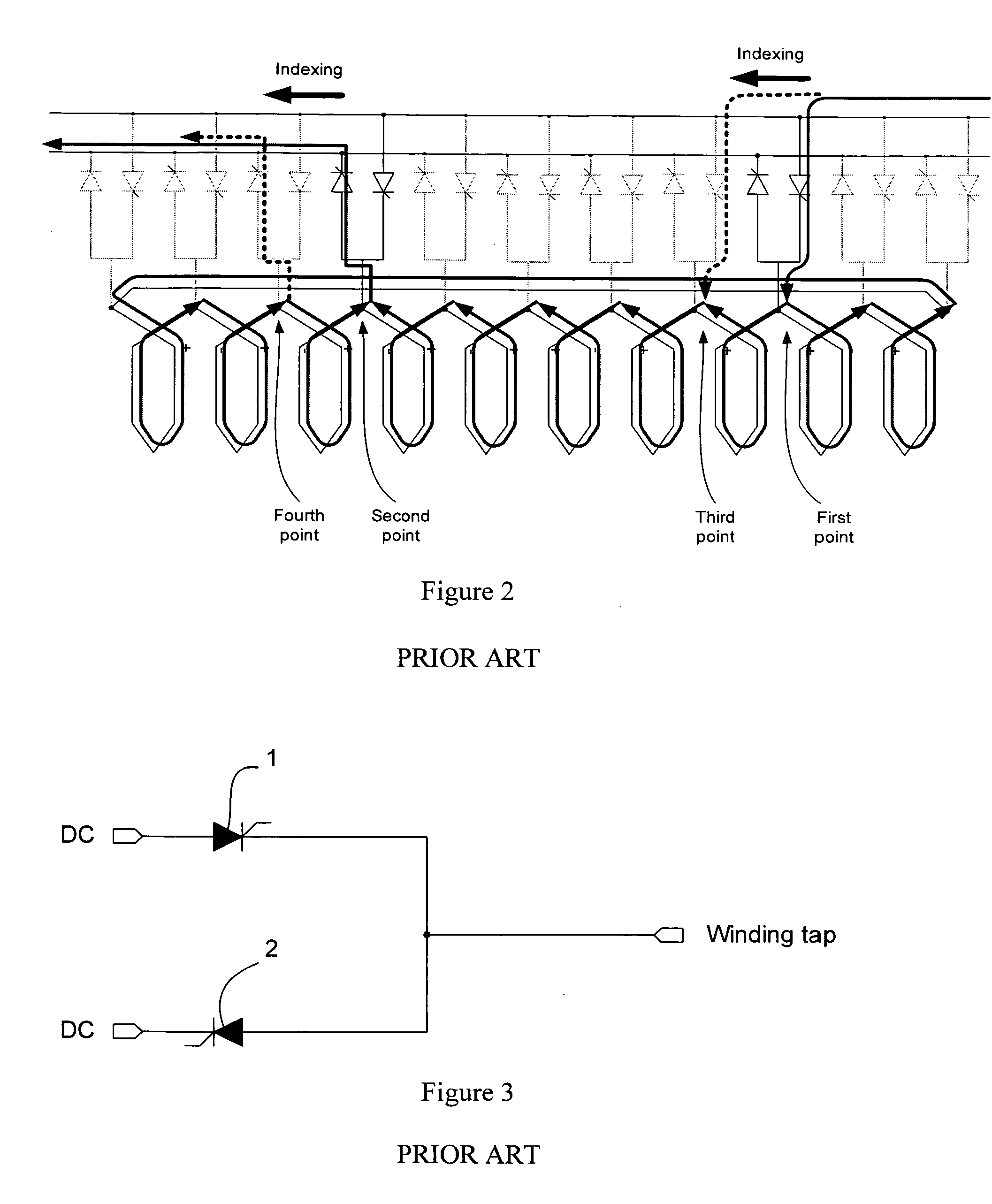Electronic commutator circuits
a commutator circuit and electronic technology, applied in the direction of multiple motor speed/torque control, dynamo-electric machines, synchronous motor starters, etc., can solve the problems of low duty cycle conduction conditions, high on-state voltage drop, and lack of internal regenerative properties of structures, so as to reduce power losses and component stresses
- Summary
- Abstract
- Description
- Claims
- Application Information
AI Technical Summary
Benefits of technology
Problems solved by technology
Method used
Image
Examples
Embodiment Construction
[0066]FIGS. 6A and 6B show a gate commutated forced commutation of a Reverse Blocking Gate Turn Off Thyristor (RB-GTO) in a simplified form. In FIG. 6A, a RB-GTO employs a series connected resistor-capacitor switching aid network (snubber) that is connected in parallel with the power terminals of the RB-GTO. A gating system is employed and this is depicted as a current source “I gate”. The load is depicted as a current source “I load”. Associated current and voltage waveforms are shown with respect to time in FIG. 6B.
[0067] Prior to commutation, load current “I load” flows through the power terminals of the RB-GTO. The current flowing through the RB-GTO, represented by “I cathode” is therefore equal to the load current “I load” while the current source “I gate” and the current flowing through the snubber “I snubber” are both zero. The RB-GTO is considered to be latched in the on state.
[0068] To initiate the commutation, the current source “I gate” is injected with the appropriate ...
PUM
 Login to View More
Login to View More Abstract
Description
Claims
Application Information
 Login to View More
Login to View More - R&D
- Intellectual Property
- Life Sciences
- Materials
- Tech Scout
- Unparalleled Data Quality
- Higher Quality Content
- 60% Fewer Hallucinations
Browse by: Latest US Patents, China's latest patents, Technical Efficacy Thesaurus, Application Domain, Technology Topic, Popular Technical Reports.
© 2025 PatSnap. All rights reserved.Legal|Privacy policy|Modern Slavery Act Transparency Statement|Sitemap|About US| Contact US: help@patsnap.com



